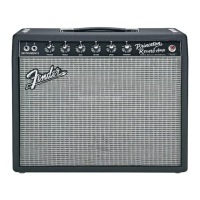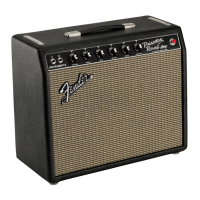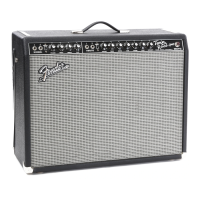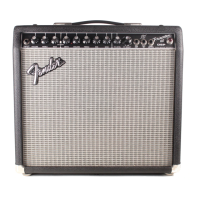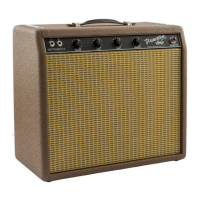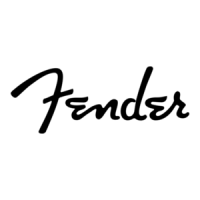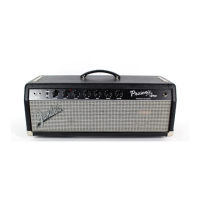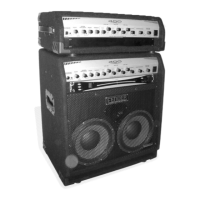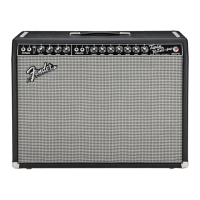◊
◊
6
Front Panels
Princeton® Recording-Amp
The legendary Fender Princeton® Reverb Amp of the 1960s
was originally intended as a practice amp – small, light, and
moderately powered, but capable of big tube tone. In the 70s
and beyond, countless guitarists found it to be the quintes-
sential studio recording amp as they crafted their signature
sounds with just a few stomp boxes and a simple miked-up
Princeton.
Today, original Princeton Reverbs are prized collectibles.
To many home recording enthusiasts, the Princeton is still
the best choice for tube tone in a small space. Therefore,
the Princeton Recording amp offers all of the great tone
and dynamics of the original, plus a few modern studio-
friendly features packed in like Power Attenuator, Overdrive,
Compressor, and XLR Line Output. The robust 15-Watt power
platform even provides enough output for small gigs and
rehearsals. Features include:
• All tube preamp, power amp, and Reverb circuitry based on
1965 Princeton Reverb
• 15 Watts from two 6V6 output tubes
• One 12AT7 tube and three 12AX7 preamp tubes
• One 10” Jensen C-10R speaker for spanky vintage tones
• Two footswitchable “stomp box” effects, which can be
engaged or completely disengaged from the signal path as
desired:
• 3-knob Overdrive, based on traditional stomp box tones,
pushes the warm Princeton tone “over the top”
• 2-knob Compressor, based on classic recording-friendly
“stomp boxes,” adds sustain to clean or overdriven tones
• Power attenuator utilizes all-new patented Trans-Impedance
Amplifier technology, allowing home-friendly power
attenuation with full interaction between the power amp
and the speaker. Crank up the amp for full output tube
overdrive; then set the volume of the speaker as low as you
want. The feel and “bounce back” dynamics of the speaker
are reflected back to the tube amp and the player’s hands,
NOT housemates or family members! The patented circuit
eliminates the stiff, lifeless playing feel of other power
attenuators, and may be completely bypassed when not
needed.
• Genuine Fender spring Reverb by Accutronics
• Speaker Emulated Line Output with XLR connector, Level
control, and Ground Lift
• Professional FX loop
• 4-button Footswitch included for remote selection of
Overdrive, Compressor, Reverb, and FX Loop
• 1965 Fender Blackface cosmetic treatment
• 5-year limited transferable warranty
The World's Most Popular Instrument Amplifiers...
Since 1946
A. INPUT
Full sensitivity input for most guitars.
B. INPUT A lower sensitivity (-dB) input allow-
ing cleaner response with high-output guitars.
NOTE: Both inputs become equal in sensitivity when used
simultaneously.
C. VOLUMEAdjusts the tube power amp level. Use in
combination with the POWER ATTENUATOR {O} to set the
overall loudness and timbre of the amplifier.
D. TREBLEAdjusts high–frequency tone character.
E. BASSAdjusts low–frequency tone character.
F. REVERBAdjusts Reverb. See FOOTSWITCH {Z}.
G. POWER JEWELIndicates when the unit is ON.
H. COMPRESSOR ONOFFPress IN to engage
the Compressor circuit as indicated by the LED. See
FOOTSWITCH {Z}.
COMPRESSOR Off COMPRESSOR On
I. SENSITIVITYAdjusts the amount of signal sustain/
moderation provided by the Compressor.
J. LEVELAdjusts the Compressor volume output. Set the
Compressor ON volume equal to the Compressor OFF
volume level or set contrasting levels as desired.
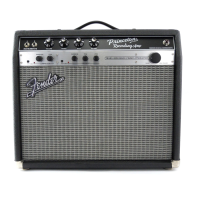
